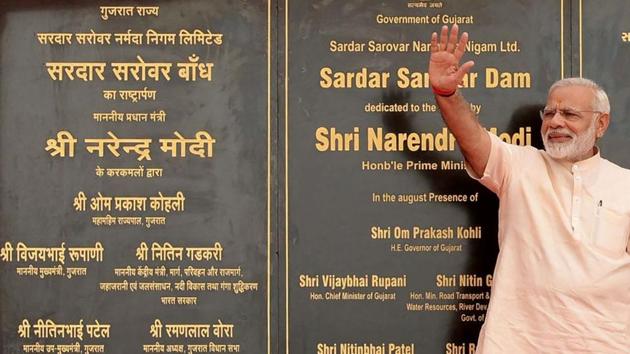It is time to rethink the ‘big dams’ model of development
Big dams such as the Sardar Sarovar have been built on an obsolete belief that the benefits of hydropower outweigh its other costs. But we now know that this is no longer the case
The scientific imagination that put big dams at the centre of a national development paradigm belongs to a century long gone. The prevalent ideology around the world at the time when dams such as the Sardar Sarovar were envisioned have undergone a sea change in the decades it has taken to bring it to conclusion.

The original thought behind building dams to harness the power of rivers was the promise of clean, pollution-free, hydropower that would bring electricity to many districts in India. But this outlook was changing even in the 1950s. Nehru himself, who famously called dams ‘temples of modern India’ in 1954 while inaugurating the Bhakra Nangal had changed his mind by 1958, observing that we in India might be suffering from “the disease of gigantism” and rooted for smaller irrigation projects. In a letter to chief ministers in 1957, Nehru had pointed out the need to balance development projects with the need to protect the environment.
Internationally too, there have now been many attempts to do away with large projects that disrupt not just the lives and livelihoods of the people who live in these areas, but also aid the destruction of the ecosystem of the region. According to the non-profit organisation American Rivers, over a thousand dams have been removed till date in the USA alone. An article published in the Scientific American outlined the problems of water quality and ecosystems that came in the wake of building even modest sized dams. The near extinction of the fish such as the Atlantic salmon and sturgeons has been directly linked to the presence of dams on their migration routes. In fact several studies have recognised the building of dams as having the most substantial impact on the destruction of riverine ecosystems. The building of the Aswan Dam in Egypt has been blamed for the erosion of the Nile River delta, deterioration of agriculture in the area, and the increased incidents of parasitic diseases such as schistosomiasis.
The other major problem with such large projects is the problem of rehabilitation of displaced people. This is, of course, not counting the fact that the land that tribal communities and others have occupied for centuries is not just something that can be measured in acres and rupees. The cost of history and memory that lies in land and ancestral property can never be reimbursed.
India’s record of adequately rehabilitating people displaced by such projects is abysmal. Around 50 million people have been displaced due to development projects in India. In spite of this massive number of affected people, there is a glaring lack of a formal policy of rehabilitation and resettlement for displaced people. Given the terrible status of records of land titles, and the worse records of those who don’t own land such as landless labourers, it is almost always the case that many displaced people are never considered for rehabilitation. According to the South Asia Network on Dams, Rivers and People (SANDRP), many people displaced by the Bhakra project are yet to be rehabilitated at all.



